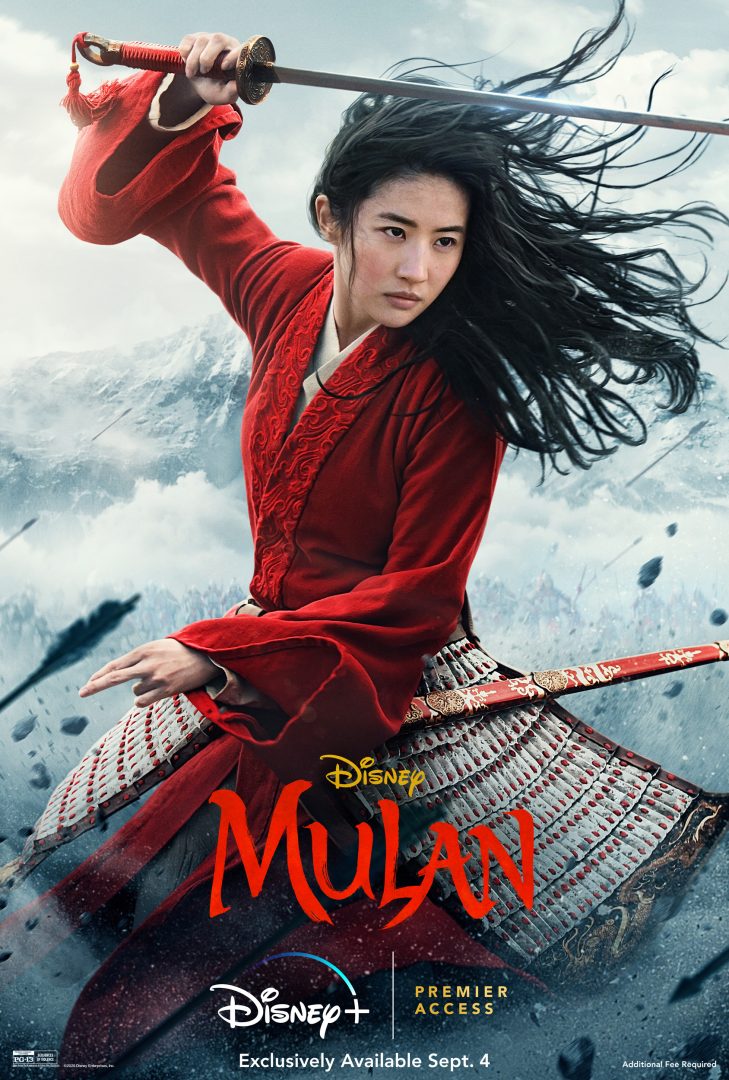
After a history of almost 100 years, Disney has cemented itself globally as the largest distributor of cinematic magic and happiness, unrivaled by any corporate entity within the industry.
So upon viewing the recent reimagining of the ‘90s animated classic “Mulan,” you may be surprised that what you find is not an honorable retelling of an already astonishing story that adds its own modern flair. Rather, Disney has instead twisted a salt-covered knife into my childhood and has gutted me of my cherished memories from the original film, and has replaced them with this hollow, piteous excuse for a movie.
With nearly double the budget as its predecessor — $90 million to $200 million, as reported by the-numbers.com — “Mulan (2020)” is proof that while Disney still has the ability to create some truly wonderful and original movies like “Moana” and the “Wreck-It Ralph” franchise, making these kinds of movies is simply their choice. As a conglomerate, Disney can either put thought and whimsy into their projects, or they can allow a mathematical formula to piece together what it is we call “a film.”
Seconds in, the audience is greeted with a painful number of clichés, the two biggest offenders being:
- The inclusion of narration telling us exactly what we can see happening on screen because this PG-13 adaptation of a 22-year-old film thinks its audience to be infants. This happens several times throughout the movie, ripping us out of the narrative and undermining the few moments that may have been capable of drawing out some sense of emotion.
- A subversion from the story of the original film wherein Mulan has a special control over the vast amount of chi within her unlike anyone else, supporting a redundant “chosen one” narrative. This detail is more in tune with the Chinese folklore that inspired the films, but it is exclusively detrimental to any theme the 2020 film tried to present.
This second issue is uniquely frustrating, as what made the 1998 movie so impactful to much of its audience was how hard Mulan had to work and train just to be at the same level as all of the men surrounding her, let alone stronger than them. This struggle was so relatable to the film’s female audience young and old, and to the young girls it was an inspirational message telling them that regardless of their sex they were capable of amazing things.
The “chosen one” aspect of the new “Mulan” abandons this message, and instead says that if you want to be successful you better hope you were selected by some deity, otherwise you are destined to a life of mediocrity.
I must clarify, initially I was going to attempt to view “Mulan (2020)” independently from “Mulan (1998).” However, after actually seeing the new “Mulan,” I’d say it’s fair for me to draw comparisons between the two since it does the same by inserting several out of place callbacks to the original film into itself.
The innocent usage of a few musical stings from the 1998 movie was fine. On the other hand, naming a character we only see once “Cricket” in reference to the animal companion from the original movie, when every other character has a traditional Chinese name, is inexcusably forced. In the end, all these callbacks only made me think about how almost all of the changes made in “Mulan (2020)’s” writing were questionable at best. For example, the omission of each and every character with a complex or interesting story.
With the absence of key characters such as Mushu and Shang from the 2020 film, the assumption would be that it would make up for these absent narratives by adding some additional depth to the other characters. This assumption would be incorrect. There was an attempt, as is evident by the addition of Xian Lang, a second villain threatening the safety of China.
Xian Lang’s story is at first empathetic, but it is undermined by her undefined and seemingly infinite powers that she could clearly use to conquer the world whenever she wants but for some reason doesn’t. The primary antagonist, Bori Khan, is written just to be as evil as possible and nothing more. The one empathetic aspect of his story (which is yet another cliché that goes entirely unexplored), is countered by his raging misogyny.
Mulan herself is an incredibly shallow character in this version of the story. Since a large portion of her struggle is eliminated by her being born with superhuman abilities, there is more of an emphasis on her difficulties hiding her identity as a female from the military men surrounding her.
Admittedly, there are some scenes involving Mulan binding her chest that do a great job representing Mulan’s overall difficulties during this period through an image of physical pain. The chest binding even forms a neat narrative circle when it comes to benefit her later in the film, and I would say this was probably my favorite addition to the Mulan narrative.
The real problem with this story is the way Mulan herself is portrayed. This is the fault of both the actress Liu Yifei, who I think only shows emotion twice in this two hour film, and the director Niki Caro, who decides to not give the lead character any scenes to actually reflect on her decisions or even voice a thought.
As a character Mulan has such little voice. Yes, in the action sequences of course she is unchallenged, but any words that come from her that should be impactful are stripped away. I mean this both figuratively and literally.
In every moment where Mulan should speak up and say something emotionally charged, the camera instead just zooms in slowly on her neutral face until the movie cuts to the next scene. This happens quite often.
On the literal side, during one of the film’s most important scenes, Mulan has a brief monologue where her point is ignored by the soldiers surrounding her until her final line. In the 1998 film, the line was said by her. In the 2020 film, the line is instead given to one of the other male characters, essentially taking away all of Mulan’s strength where it really matters.
The last aspect of the film I have yet to discuss is the action sequences. “Mulan (2020)” is very much an action movie, hence why it is PG-13. As to be expected, it spends much of its time on various scenes of war. Sadly, the fight choreography for these scenes are lacking.
Many technical aspects of the fights are distracting, such as obvious CGI replacements of the characters, random slow motion cinematography, and the nauseating abundance of rapid camera cuts. Additionally, the fights also repeat the same gimmicks far too often and randomly allow characters to perform inhuman stunts in one moment and in the next they are overcome by something mundane.
There really is no reason to watch 2020’s Mulan, especially when it’s barricaded behind at minimum, a $7 Disney+ subscription as well as an additional $30 price tag. The movie is a poorly executed action film with minimal story beats and zero passion. It is a husk of what once was a glorious and inspirational story filled with fantasy and consequences. The only purpose “Mulan (2020)” serves is as a symbol for 2020 itself: a relentless carnival of folly that only seems to get worse over time.








